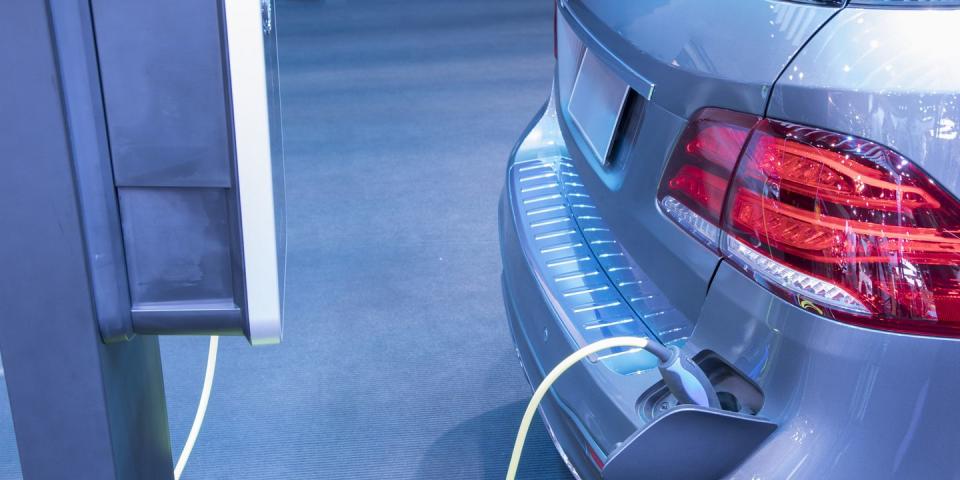The Key to Fast Charging Electric Cars Is Flying 248 Miles Above Our Heads

It’s not so simple to make faster electric vehicle chargers, because the increased electricity means excess heat, too.
A NASA experiment meant to cool electronics aboard spacecraft could also find its way into EV chargers.
Theoretically, a charging station with this technology could juice up an EV battery in just five minutes.
Only a few obstacles stand between electric cars and true automotive supremacy. Most electric vehicles remain prohibitively expensive (even with tax credits), and charging infrastructure is still frustratingly scarce. But the problem that looms large in the minds of the EV curious is charging time. A gas-guzzling F-150 takes only minutes to top off at the pump, but its electrified cousin, the F-150 Lightning, takes more than a half-hour tethered to a fast charger to reach just 80 percent battery capacity.
Unfortunately, quickly pumping more energy into an EV isn’t as easy as it sounds, because more electricity means more heat—a troubling combination that can have explosive results. In other words, to make a faster-charging EV, you need some way to deal with those excess degrees Fahrenheit.
Flying at 17,500 miles per hour some 248 miles above our heads aboard the International Space Station (ISS) is a project known as the Flow Boiling and Condensation Experiment (FBCE). Today, NASA cools onboard electronics with a single-phase system, a sub-cooled element that stays in a single liquid “phase.” However, the FBCE—designed by Issam Mudawar, a professor of mechanical engineering, and his lab at Purdue University—is a two-phase system. As its name suggests, the system uses two phases, both liquid and vapor, to more efficiently transfer heat.
The experiment’s Flow Boiling Module contains heat-generating devices along a flow channel filled with coolant. As things heat up, water boils near the channel’s wall, forms bubbles, and then “depart[s] the walls at high frequency,” according to NASA. This heated vapor is then replaced by coolant pulled from the interior of the flow channel. The vapor eventually condenses and returns to its liquid form.
After being delivered to the ISS in 2021, the FBCE team conducted tests to see if this cooling technique worked in microgravity, a feature that’s unnecessary for EVs (unless NASA wants to recharge Elon Musk’s space Tesla). While the data gathered from FBCE will improve spacecraft cooling systems on long-duration missions (where more power and improved thermal management are needed), the impact of the underlying technology could be felt much closer to home.
Many modern EV fast-charging stations are rated at 350 amperes due to temperature restrictions. NASA estimates that Purdue’s cooling system could increase that to a whopping 2,400 amperes. To put that into perspective, a charging station supplying a steady flow of electricity at 1,400 amperes alone could fully charge an EV in just five minutes.
Getting tech from a laboratory to the real world can take years, but this cooling system could be an exception to the rule. In November 2021, Mudawar teamed up with Ford and aimed to create a prototype cable by 2023. Months later, Purdue’s School of Mechanical Engineering announced the creation of the Research Center for Electric Vehicle Charging and Thermal Management, which is dedicated to delivering on these liquid-cooled, next-gen charging cables.
Of course, charging stations and batteries will also need to be redesigned to supply and store this huge jump in ampere output, but having a cable that can handle the heat is an important piece to the puzzle. Maybe one day, the tech found in NASA’s most advanced spacecraft throughout the solar system will be found on streets throughout the world.


 Yahoo Autos
Yahoo Autos 